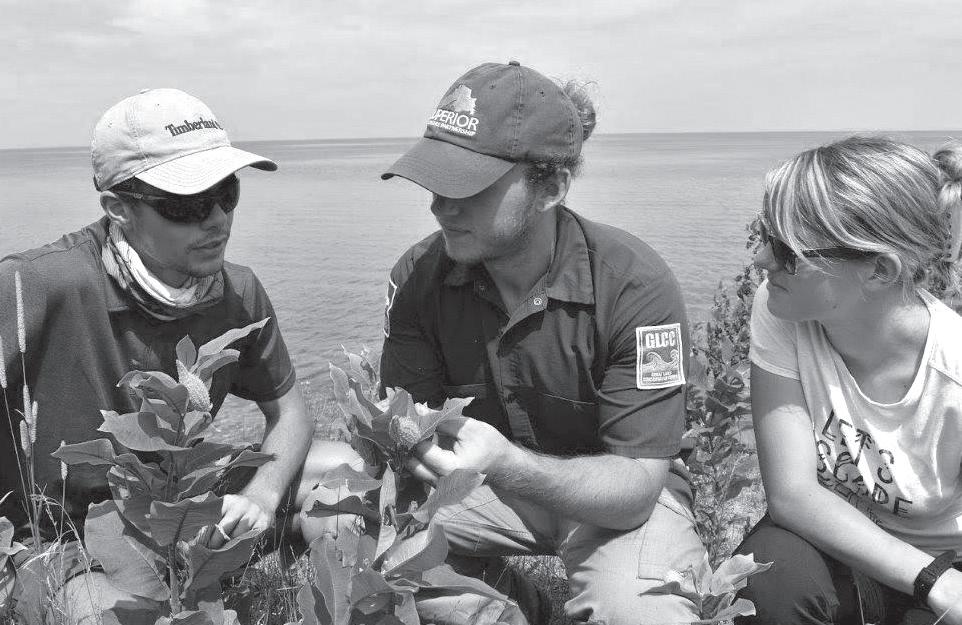
2 minute read
Lookout Point SWP Staff
Great Lakes Climate Corps member Logan Turner shows volunteers the proper way to transplant milkweed for pollinators.
SUMMER HOME
Advertisement
GLCC, volunteers work to restore habitat for dwindling pollinators
Story and photos by SWP staff
There is a magical place in the Upper Peninsula where each fall, thousands of monarch butterflies gather together before crossing the open waters of Lake Michigan on their annual migration to the mountains of Mexico. This autumn spectacle occurs over the course of several weeks in the Hiawatha National Forest at the southern tip of the Stonington Peninsula at a place called Peninsula Point.
If you’re lucky enough to arrive when all the conditions are just right—sunny day, light northerly breeze, low humidity, etc.—you will witness one of the planet’s most amazing migrations. The National Forest in cooperation with the Superior Watershed Partnership, Great Lakes Climate Corps and committed volunteers have been working diligently for many years to provide the best possible habitat conditions for monarchs that visit Peninsula Point. This work has included removing acres of non-native, invasive plants species and handplanting more than 100,000 native plants, mainly milkweed plants.
Milkweed is practically the only plant that monarchs will eat, and it is also the only plant that monarchs will lay their eggs on.
Sadly, monarch butterflies, and other important pollinators such as bees, have experienced dramatic population declines in recent years due to a variety of factors including loss of habitat, development pressure, pesticide use, herbicide use and climate change. Tragically, the U.S. Fish and Wildlife Service (USFW) recently listed 23 species as officially extinct and has classified the monarch as a candidate species for potential listing under the Endangered Species Act. The good news is that in the eastern United States, and especially in the Upper Peninsula, there are glimmers of hope for the embattled monarch butterfly and other pollinators.
Over the last decade the SWP has made a concerted effort to collaborate with local, state, federal and tribal partners to improve habitat for pollinators all across the Upper Peninsula; not just Peninsula Point. The Great Lakes Climate Corps has completed pollinator habitat restoration projects in all fifteen counties of the UP. But the GLCC doesn’t always do this sweaty, back-breaking work alone as they often enlist the help of a wide range of enthusiastic volunteers including K-12 and college students, local residents, area visitors, senior citizens, church groups and community organizations.
The GLCC and volunteers have worked to improve pollinator habitat in local












